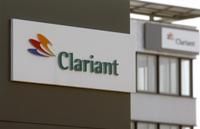Corporate primary markets were closed for the third day on Tuesday as credit spreads remained volatile in the aftermath of the EU summit, and syndicate bankers voiced mixed views on whether issuance markets will reopen again before year-end.
“The big concern is that we’re going to have to wait longer for a clear solution to the problems in Europe and at least until March for any treaty changes to be signed off,” said one high-yield syndicate official.
Another high-yield banker was more upbeat and said the market had overreacted on Monday.
“Things are calmer today, and the EU is working towards tighter fiscal integration. The market is just trying to force the ECB to buy more bonds in the secondary market.”
The iTraxx Main was 2.5bp tighter at 183.5bp by 13:45 GMT, but it had opened wider in choppy trading. The index had staged a strong rally last week ahead of the summit, tightening by around 40bp between November 23 and December 7, and still remains well below wides of 220bp hit earlier this year.
Last week’s investment-grade issues have performed well in secondary, with Vinci having tightened more than 15bp from reoffer and other deals trading between 5 and 15bp tighter.
In the Crossover space, Swiss speciality chemicals maker Clariant is still waiting for a good entry point, timing wise, after holding investor updates in the past couple of weeks.
“It’s pricing as opposed to access for a lot of these companies,” said the banker.
High-yield volatility
In high-yield, the situation is a lot more volatile and most syndicate officials agree that all bets are now off in terms of primary deals for this year. That would leave total supply for 2011 at €38.6bn for all non-dollar denominated high-yield bonds – around €3.5bn shy of last year’s record €42bn – according to Thomson Reuters data.
The Crossover index was 13bp tighter at 780bp by 13:45GMT, and although it remains well below this year’s earlier highs near 900bp, some companies are still priced out of the market as a result.
Deutsche Bank, Royal Bank of Scotland and UBS had been marketing a high-yield bond for Northern Irish utility Viridian with just weeks left before a roughly £260m loan was due to mature in December.
Its lenders last week agreed to extend the maturity of its debt until November next year, at a more expensive margin of close to 500bp over Libor, after the company failed to pull off a high-yield bond during the summer.
Still, one of the bankers said there were a number of double B rated issuers with 2014 maturities that are keen to access the market as soon as possible next year to wrap up refinancings.
Bankers are also still relatively upbeat about expectations for the third pillar of high-yield supply – bonds that either fully or partly back leveraged buyouts. A number of banks are working on debt packages for Belgian chemicals group Taminco and France Telecom’s sale of Orange Switzerland, the final bids on which were submitted on Monday and Friday respectively.
“Leverage has come down, but the fact that there is still significant interest from both sponsors and banks to do deals shows that the market is in reasonable shape. It’s nothing like in 2007/08 when the market went from being wide open to completely shut within a couple of weeks,” one of the bankers said.
Another key trend seen developing next year is for more European high-yield issuers to access the more resilient U.S. high-yield market. Dutch-based cable company UPC, for example, refinanced relatively cheaply in the dollar market in November with a US$500m leveraged loan, and Spanish cable company ONO has also tapped the dollar market this year.
The debt financing for Taminco could potentially include a dollar bond, depending on who wins the bidding process, one of the bankers says, as it would match the company’s partial dollar revenues.
The banker said that the financing could potentially include a combination of leveraged and mezzanine loans, rather than high-yield bonds, because of the greater certainty of financing in the smaller, and more niche, mezz market.
“Mezz is more expensive, but some sponsors prefer to know upfront that there will be paying 13-14% with mezz than have the uncertainty of when they can access the high-yield market.”
High-yield bonds backing the summer buyouts for the buyouts of both Swedish alarms business Securitas Direct and Polish telecom firm Polkomtel, for example, have still yet to come to market.
Appetite for high-yield debt still appears reasonably strong despite some small weekly outflows over the past month.
Scottish Widows Investment Partnership (SWIP) said on Tuesday it had launched a new European high-yield bond fund.
“For investors, the high-yield asset class offers the prospect of a strong risk adjusted return and a high level of income that is diversified from equities and other fixed income segments,” said Steve Logan, head of European high yield at SWIP.
“A recession in Europe is already priced into the asset class and the high quality end of the market looks fundamentally cheap.”

